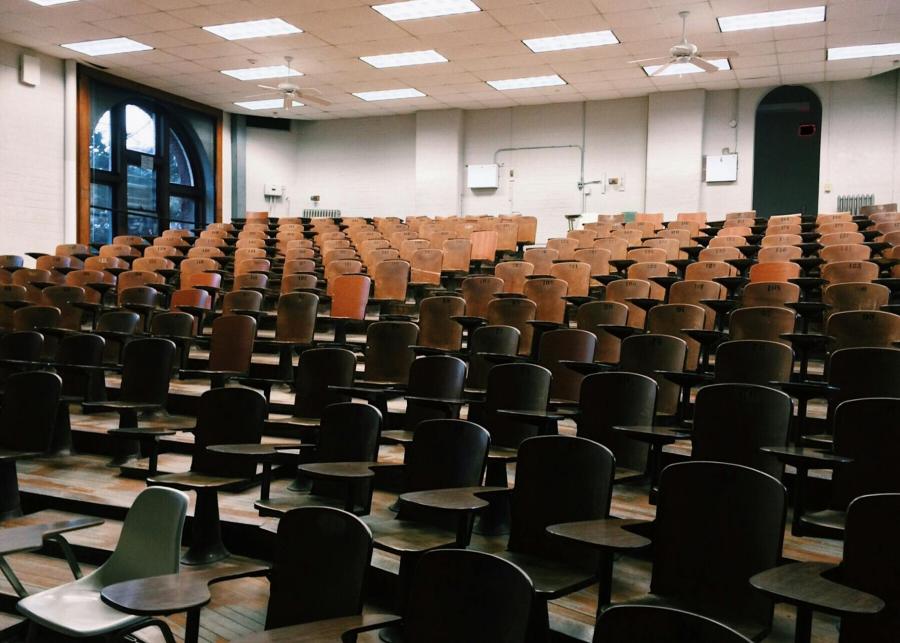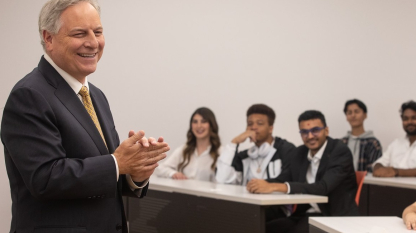
The following column appeared in Forbes, where San Francisco Bay University President Nicholas Ladany is a contributor.
In recent years, a national conversation in the United States about the value of higher education has intensified, with growing and legitimate concerns over whether institutions are providing sufficient value or return on investment. Critics point to a misalignment between the curriculum offered and the evolving demands of the job market, alongside soaring tuition fees that seem to have no ceiling. Compounding this issue, the National Center for Education Statistics (NCES) has revealed that only about 41% of students graduate with a four-year degree within four years, highlighting a stark inefficiency within the system. Moreover, higher education purports to be rooted in scientific analysis and academic freedom, yet, when confronted with such inefficiencies, the tendency is to run, hide, and obfuscate rather than address with the intellectual prowess warranted.
The necessity for an open dialogue about the state of higher education is clear, yet such discussions are seldom conducted with the transparency and honesty needed. The challenges facing higher education are not insurmountable, but they require a willingness to confront systemic and historical issues head-on and to implement meaningful reforms that can rebuild trust and fulfill the educational promise to students.
To initiate change, it is crucial to understand the barriers that hinder student progress. The origins of higher education, rooted in the post-Enlightenment period, were designed to cater to a select, elite segment of society (almost exclusively wealthy white men) with a focus on generating knowledge. This historical backdrop explains why many institutions today sometimes prioritize research (loosely defined) over teaching, often at the expense of student-centric approaches. This disconnect suggests a deep-seated structural issue within higher education, where the emphasis on creating knowledge does not always align with the needs and aspirations of a diverse student body.
With that history and focus in mind, it is easier to understand why many of the industry's challenges stem from the very roots of higher education. Historically, education was not about the student; it was about the knowledge. That set the stage for the traditional college or university experience to be centered around the faculty and their role in the advancement of knowledge. Unfortunately, this has created a flawed framework that is not sustainable.
Why is it that the primary workforce in universities and colleges – the faculty – is not trained to do an essential job, that is, teach? You would be hard-pressed to identify another nonprofit or for-profit business that takes this approach toward hiring. The majority of university and college instructors are selected for their advanced degrees and specialized content knowledge, rather than their teaching abilities. Unlike K-12 educators, who undergo extensive training in pedagogy, higher education instructors lack formal preparation in teaching methods and curriculum design, yet “own” the curriculum within most institutions, deciding what to teach in class and how. This discrepancy contributes to a range of issues, including lower student success rates, prolonged degree completion times, outdated or irrelevant curricula, and increased student debt. Although some institutions are making incremental strides in addressing these issues, the lack of teaching preparedness remains a systemic flaw that requires urgent attention.
Faculty education is not the only challenge. Higher education is in the midst of a staffing crisis. The structural and support systems within higher education institutions frequently fall short of meeting the modern needs of students. Beyond not having the support framework to address individual student needs, students today face a myriad of obstacles that impede their academic and personal development, in part due to the inadequate governance models that stifle innovation at the institutional level and adaptation to a lack of financial support and planning.
Additionally, the broken financial models governing many colleges and universities are exacerbating the affordability crisis, limiting access to education and contributing to the ballooning student debt problem. Who made the decision that colleges needed more rock-climbing walls over more pressing needs such as mental health?
To move forward, higher education must engage in the productive dialogue that drives real change so the industry can undergo a profound transformation that involves rethinking its foundational priorities and practices. This includes a shift towards putting the student at the center of every part of the experience and teaching excellence and curriculum relevance are paramount in a meaningful rather than cursory fashion. Institutions need to develop robust support systems that address the holistic needs of students, ensuring that everyone, regardless of their background, has the opportunity to succeed. Moreover, governance structures and financial models must be reevaluated to promote agility and responsiveness to changing educational landscapes.


